- Home
- Bill Bryson
The Life And Times Of The Thunderbolt Kid: A Memoir (v5.0) Page 23
The Life And Times Of The Thunderbolt Kid: A Memoir (v5.0) Read online
Page 23
I thought it was wonderful. I couldn’t wait for more signs like it everywhere, and I quickly got my wish as newer, more insistent, more car-friendly businesses popped up all over. In 1959, Des Moines got its first shopping mall, way out on Merle Hay Road, a part of town so remote, so out in the fields, that many people had to ask where it was. The new mall had a parking lot the size of a New England state. No one had ever seen so much asphalt in one place. Even my father got excited by this.
“Wow, look at all the places you can park,” he said, as if for all these years he had been cruising endlessly, unable to terminate a journey. For about a year the most dangerous place to drive in Des Moines was the parking lot of Merle Hay Mall because of all the cars speeding at joyous random angles across its boundless blacktop without reflecting that other happy souls might be doing likewise.
My father never shopped anywhere else after that. Neither did most people. By the early 1960s, people exchanged boasts about how long it had been since they had been downtown. They had found a new kind of happiness at the malls. At just the point where I was finally growing up, Des Moines stopped feeling like the place I had grown up in.
AFTER GREENWOOD I moved on to Callanan Junior High School for grades seven to nine—the early teen years. Callanan was a much worldlier school. Its catchment area covered a broader cross-section of the city so that its enrollment was roughly half black and half white. For many of us this was our first close-up experience of black kids. Suddenly there were six hundred fellow students who were stronger, fleeter, tougher, braver, hipper, and cannier than we were. This was when you realized for certain something that you had always privately suspected—that you were never going to take Bob Cousy’s place on the Boston Celtics, never going to break Lou Brock’s base-stealing records for the St. Louis Cardinals, never going to be invited to Olympic trials in any sport. You weren’t even going to make the junior varsity softball team now.
This was evident from the very first day when Mr. Schlubb, the pear-shaped PE teacher, sent us all out to run half a dozen laps around a preposterously enormous cinder track. For the Greenwood kids—all of us white, marshmallowy, innately unphysical, squinting unfamiliarly in the bright sunshine—it was a shock to the system of an unprecedented order. Most of us ran as if slogging through quicksand and were gasping for air by the first bend. On the second lap a boy named Willis Pomerantz burst into tears because he had never perspired before and thought he was leaking vital fluids, and three others petitioned to be sent to the nurse. The black kids without exception sailed past us in a jog, including a three-hundred-pound spheroid named Tubby Brown. These kids weren’t just slightly better than us, they were better by another order of magnitude altogether, and it was like this, we would find, in all sports.
Winters at Callanan were spent playing basketball in a dim-lit gymnasium—we seemed to spend hours at it every day—and no white kid I know ever even saw the ball. Honestly. You would just see a sequence of effortless blurs moving about between two or three lanky black kids and then the net would go swish, and you would know to turn around and lope down to the other end of the court. Mostly you just tried to stay out of the way, and never ever raised your hands above your waist, for that might be taken as a sign that you wanted a pass, which was in fact the last thing you wanted. A boy named Walter Haskins once unthinkingly scratched the side of his head near the basket, and the next instant was hit square in the face so hard with a ball that the front of his head went completely concave. They had to use a bathroom plunger to get it back to normal, or so I was told.
The black kids were all immensely tough, too. I once saw an overfed white lummox named Dwayne Durdle foolishly and remorselessly pick on a little black kid named Tyrone Morris in the serving line in the cafeteria, and when Tyrone could take no more, he turned with a look of weariness and sad exasperation and threw a flurry of punches into Durdle’s absorbent face so fast that you didn’t actually see his hands move. All you heard was a kind of rubbery flubba-da-dubba sound and the ping of teeth ricocheting off walls and radiators. As Durdle sank to his knees, glassy-eyed and gurgling, Tyrone thrust an arm far down his throat, grabbed hold of something deep inside, and turned him inside out.
“Goddamn fool muthah-fuckah,” Tyrone said in amazed dismay as he retrieved his tray and continued on to the dessert section.
Mostly, however, there were almost no overt bad feelings between blacks and whites at Callanan. The black kids were poorer than the rest of us more or less without exception, but otherwise were just the same in nearly all respects. They mostly came from solid, hardworking homes. They spoke with identical voices, shopped at the same stores, wore the same clothes, went to the same movies. We were all just kids. Apart from my grandmother asking for nigger babies at Bishop’s, I don’t remember hearing a single racist remark in the whole of my upbringing.
I wouldn’t pretend that we didn’t notice that black kids were black, but it was as close to not noticing as you could get. It was much the same with other ethnic groups. Some years ago when I came to apply a pseudonym to one of my boyhood friends, I chose the name Stephen Katz partly in honor of a Des Moines drugstore called Katz’s, which was something of a local institution in my childhood, and partly because I wanted a short name that was easy to type. Never did it occur to me that the name was Semitic. I never thought of anybody in Des Moines as being Jewish. I don’t believe anyone did. Even when they had names like Wasserstein and Liebowitz, it was always a surprise to learn they were Jewish. Des Moines wasn’t a very ethnic place.
Anyway, Katz wasn’t Jewish. He was Catholic. And it was at Callanan that I met him when he was recruited by Doug Willoughby to join in an organized takeover of the Audio-Visual Club—a cunning but unusual move and a lasting testament to Willoughby’s genius. Club members were put in charge of maintaining and showing the school’s enormous cache of educational films. Whenever a teacher wanted to show a movie—and some teachers did little else because it meant they didn’t have to teach or even spend much time in the classroom—a member of the elite A/V team would wheel a projector to the room in question, expertly thread and loop the film through half a dozen sprockets, and show the desired educational offering.
Historically, the A/V Club was the domain of the school’s geekiest students, as you would expect, but Willoughby at once saw the advantages the club offered to normal people. For one thing, it provided a key to the only locked space in the building to which students had access and where we could almost certainly smoke once he had cracked the ventilation problem (which he quickly did). Further, it gave access to a vast supply of movies, including all the sex-education films made between roughly 1938 and 1958. Finally, and above all, it provided a legitimate excuse to be at large in the empty hallways of Callanan during class time. If challenged by a teacher while roaming through the shiny corridors (and what a delightful, relaxing, privileged place school corridors are when empty) you could simply say: “I’m just going up to the A/V room to do some essential maintenance on a Bell and Howell 1040-Z,” which was in fact more or less true. What you didn’t say was that you would also be smoking half a pack of Chester-fields while there.
So at Willoughby’s behest, fifteen of us joined the club, and as our first order of business voted all the existing members out. Only Milton Milton was allowed to stay as a sort of token geek and because he gave us half a bottle of crème de menthe he’d stolen from his dad’s liquor cabinet and because he threatened to report us to his parents, the principal, the school board, and the county sheriff, whom he dubiously claimed as a close family friend, if we didn’t allow him to remain in the club.
The A/V room was tucked away in an obscure corner of the building, upstairs and at the back. It was like the school attic. It contained a large assortment of old stage props, costumes, scripts, yearbooks from the 1920s and 1930s, and dusty shelves of old films—hygiene movies, newsreels, sex-education films, marijuana-will-melt-your-brain films, and much else. We spent many happy hours showing
the sex-education films on the walls.
Willoughby discovered a film-splicing kit and spent hours editing the films for his own amusement, putting goose-stepping Nazis into movies about the Oregon Trail and so on. His finest moment was in a sex-education film when the narrative line “Johnny had just experienced his first nocturnal emission” was immediately followed by a shot of Naval Academy cadets throwing their hats in the air.
It was in the A/V Club, as I say, that I met a transfer student from the Catholic school system named Stephen Katz. I have never come close to doing the real Stephen Katz justice on any of the occasions I have put him in my books—no mortal author could—and I’m afraid I won’t now except to say that he is the most extraordinary human being I have ever met, and in many ways the best. In those days he was the chipperest, friendliest, most party-ready human being the Earth had ever known when sober and even more so when drunk, which he was much of the time even at the age of fourteen. I have never known anyone so drawn to, so amiably at home with, intoxicants. It was evident from the first moment that he was an engaging danger.
Often Katz and Willoughby and I skipped school and spent long days trying to get into Willoughby’s older brother Ronald’s chest of drawers. Ronald had an enormous collection of men’s magazines, which he kept securely locked in a large chest in his bedroom. Ronald was the oldest, smartest, and by far best behaved of the Willoughby boys—he was an altar boy, Explorer Scout, member of the student council, hall monitor, permanent asshole—and more cunning than his three brothers put together. Not only was every drawer in the chest locked with ingenuity, but each drawer when opened had been given an impenetrable lid that seemed to offer no way in at all. On top of all this, much of the room, from the doorknob to certain of the floorboards, was lethally booby-trapped. Depending on what the intruder touched or tampered with, he might receive a bracing electric shock or come under multiple attacks from flying missiles, falling weights, swinging hammers, lunging mousetraps, or generous effusions of homemade pepper spray.
I particularly remember a moment of brief-lived delight when Willoughby, after hours of forensic examination, finally figured out how to open the second drawer of the chest—it had something to do with rotating a piece of carved filigree on the chest molding—and in the same instant there came a whistling sound, and a slender homemade dart, about six inches long and beautifully made, embedded itself with a resonant thwoing in the chest not two inches to the left of Willoughby’s fortuitously inclined head. Attached to the shaft of the dart was a slip of paper on which was neatly written: WARNING: I SHOOT TO KILL.
“He’s fucking crazy,” we agreed in unison.
After that Willoughby shrouded himself in every defensive item of apparel he could think of—welder’s goggles, hockey mitts, heavy overcoat, catcher’s chest protector, motorcycle helmet, and whatever else came to hand—while Katz and I hovered in the hallway urging him on and asking for updates on progress.
There was a particular urgency to the task because Playboy had lately taken to showing pubic hair. It is hard to believe that until the 1960s such an important erogenous zone remained undiscovered, but it is so. Prior to this, women in men’s magazines had no reproductive apparatus at all—at least none that they were prepared to show to strangers. They seemed to suffer from an odd reflex medical condition—vaginis timiditus, Willoughby called it—that for some reason compelled them, whenever a camera was produced, to wrench their hips and fling one leg over another as if trying to get their lower half to face backward. For years I thought that was the position women naturally adopted when they were naked and at ease. When Playboy first showed pubic hair, for at least seventy-two hours it featured in every male conversation in America. (“Check your oil for you, mister? Seen the new Playboy yet?”) Woolworth’s sold out its entire stock of magnifying glasses in twenty-four hours.
We longed with all our hearts to enter that privileged inner circle, as it were. But in over two years of trying, Willoughby never did get into his brother’s private stock, until one day in frustration he broke open the bottom drawer with a fireman’s ax, and a cornucopia of men’s magazines—my goodness, but his brother was a collector—came sliding out. I have seldom passed a more agreeable or instructive afternoon. Willoughby was grounded for two months for that, but we all agreed it was a noble sacrifice, and he did have the satisfaction of getting his brother in trouble, too, for some of these magazines were frankly quite disturbing.
As always, my timing with regard to actual female flesh remained impeccably abysmal. In the summer between eighth and ninth grades, I went away to visit my grandparents, where I had the usual delightful interludes with my Uncle Dee, the human flocking machine, and came back to find that in my absence a girl of radiant prettiness and good cheer named Kathy Wilcox had come to Willoughby’s house to borrow some tracing paper and ended up teaching him and Katz a new game she had learned at Bible camp—at Bible camp!!!!!—in which you blindfolded a volunteer, spun the volunteer around for a couple of minutes, and then pressed firmly on his or her chest thirty or so times, at which point the victim would amusingly faint.
“Happens every time,” they said.
“I’m sorry, did you just say ‘her chest’—‘pressed on her chest’?” I said.
Kathy Wilcox was a young woman with a chest worth pressing. The mere mention of her name was enough to make every corpuscle of blood in my body rush to the pelvic region and swell up in huge pointless readiness. They nodded happily. I couldn’t believe this was happening to me again.
“Kathy Wilcox’s chest? You were pressing on Kathy Wilcox’s chest? With your hands?”
“Repeatedly,” said Willoughby, beaming.
Katz confirmed it with many happy nods.
My despair cannot be described. I had missed out on the only genuinely erotic, hands-on experience that there would ever be involving boys aged fourteen and instead had passed forty-eight hours watching a man turn assorted foods into flying whey.
SMOKING WAS THE BIG DISCOVERY of the age. Boy, did I love smoking and boy did it love me. For a dozen or so years I did little in life but sit at desks hunched over books French inhaling (which is to say drawing ropes of smoke up into the nostrils from the mouth, which gives a double hit of nicotine with every heady inhalation) or lounge back with hands behind head blowing languorous smoke rings, at which I grew so proficient that I could bounce them off pictures on distant walls or fire one smoke ring through another—skills that marked me out as a Grand Master of smoking before I was quite fifteen.
We used to smoke in Willoughby’s bedroom, sitting beside a window fan that was set up to blow outward, so that all the smoke was pulled into the whirring blades and dispatched into the open air beyond. There was a prevailing theory in those days (of which my father was a devoted, and eventually solitary, advocate) that if the fan blew outward it drew the hot air from the room and pulled cool air in through any other open window. It was somehow supposed to be much more economical, which is where the appeal lay for my father. In fact, it didn’t work at all, of course—all it did was make the outside a little cooler—and pretty soon everyone abandoned it, except my father who continued to cool the air outside his window till his dying day.
Anyway, the one benefit of having a fan blow outward was that it allowed you to finish each smoke with a flourish: you flicked the butt into the humming blades, which diced them into a shower of outward-flying sparks that was rather pleasing to behold and neatly obliterated the cigarette in the process, leaving no visible evidence below. It all worked very well until one August evening when Willoughby and I had a smoke, then went out for air, unaware that a solitary wayward ember had been flung back into the room and lodged in a fold of curtain, where it smoldered for an hour or so and then burst into a low but cheerful flame. When we returned to Willoughby’s house, there were three fire trucks out front; fire hoses were snaked across the lawn, through the front door, and up the stairs; Willoughby’s bedroom curtains and several pieces of fu
rniture were on the front lawn soaked through and still smoking lightly; and Mr. Willoughby was on the front porch in a state of high emotion waiting to interview his son.
Mr. Willoughby’s troubles did not end there, however. The following spring, to celebrate the last day of the school year, Willoughby and his brother decided to make a bomb that they would pack in confetti and bury the night before in the center of the Callanan lawn, a handsome sward of never-walked-upon grass enclosed by a formal semi-circular driveway. At 3:01 p.m., just as a thousand chattering students were pouring from the school’s four exits, the bomb, activated by an alarm-clock timer, would go off with an enormous bang that would fill the air with dirt and drifting smoke and a pleasing shower of twirling colored paper.
The Willoughby brothers spent weeks mixing up dangerous batches of gunpowder in their bedroom and testing various concoctions, each more robust than the previous one, in the woods down by the railroad tracks near Waterworks Park. The last one left a smoking crater almost four feet across, threw strips of confetti twenty-five feet into the air, and made such a reverberating, citywide bang that squad cars hastened to the scene from eight different directions and cruised slowly around the area in a suspicious, squinty-eyed manner for almost forty minutes (making it the longest spell that Des Moines cops had ever been known to go without doughnuts and coffee).
It promised to be a fantastic show—the most memorable letting-out day in the history of Des Moines schools. The plan was that Willoughby and his brother would rise at four, walk to the school grounds under cover of darkness, plant the bomb, and withdraw to await the end of the school day. To that end they assembled the necessary materials—spade, dark clothes, ski masks—and carefully prepared the bomb, which they left ticking away on the bedroom desk. Why they set the timer is a question that would be asked many times in the coming days. Each brother would vigorously blame the other. What is certain is that they retired to bed without its occurring to either of them that 3:01 a.m. comes before 3:01 p.m.

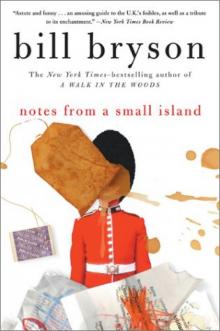 Notes from a Small Island
Notes from a Small Island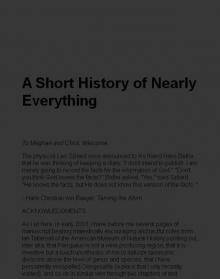 A Short History of Nearly Everything
A Short History of Nearly Everything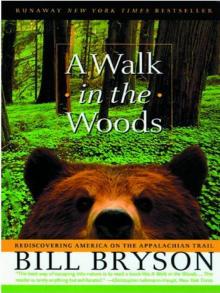 A Walk in the Woods
A Walk in the Woods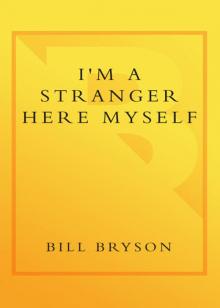 I'm a Stranger Here Myself
I'm a Stranger Here Myself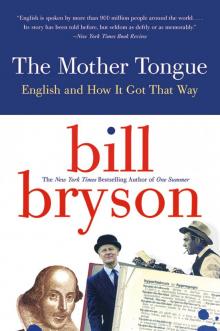 The Mother Tongue
The Mother Tongue Shakespeare
Shakespeare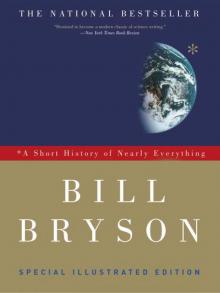 A Short History of Nearly Everything: Special Illustrated Edition
A Short History of Nearly Everything: Special Illustrated Edition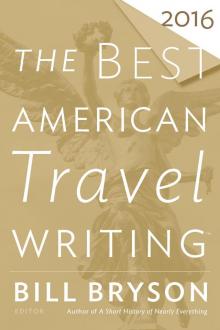 The Best American Travel Writing 2016
The Best American Travel Writing 2016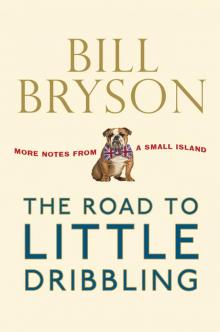 The Road to Little Dribbling
The Road to Little Dribbling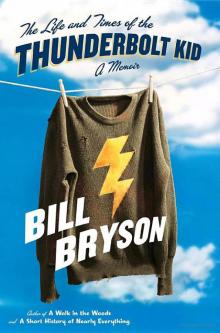 The Life And Times Of The Thunderbolt Kid: A Memoir (v5.0)
The Life And Times Of The Thunderbolt Kid: A Memoir (v5.0)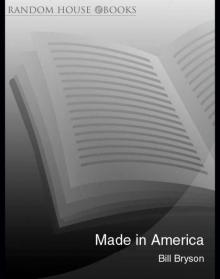 Made In America
Made In America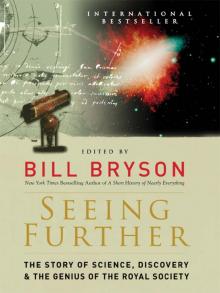 Seeing Further
Seeing Further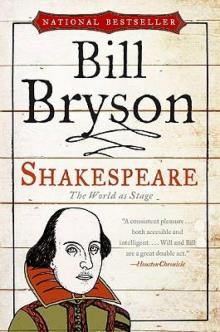 Shakespeare: The World as Stage
Shakespeare: The World as Stage The Life and Times of the Thunderbolt Kid
The Life and Times of the Thunderbolt Kid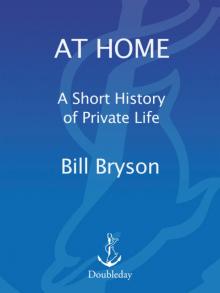 At Home
At Home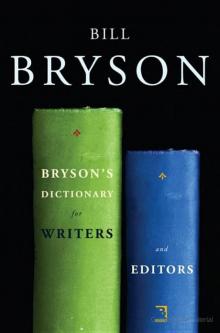 Bryson's Dictionary For Writers And Editors (v5.0)
Bryson's Dictionary For Writers And Editors (v5.0)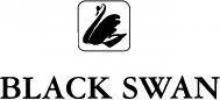 Neither Here Nor There
Neither Here Nor There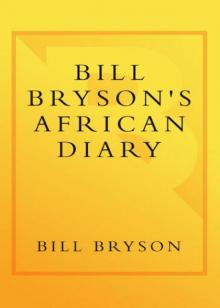 Bill Bryson's African Diary
Bill Bryson's African Diary